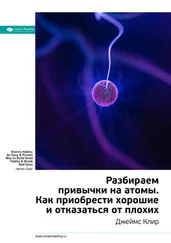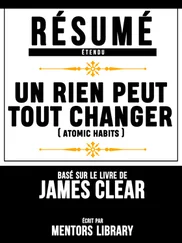environment
and context, 87–90
creating an environment where doing the right thing is as easy as possible, 155
dedicated spaces for different activities, 87–90
delayed-return, 187–90
Dutch electrical meter example of obvious cues, 85
effect of environment on an addiction, 92
immediate-return, 187–90
Lewin’s Equation for human behavior, 83
Massachusetts General Hospital cafeteria example of design change, 81–82
priming your environment, 156–58
redesigning your environment, 86–87
suggestion impulse buying, 83
Vietnam War heroin addiction problem example, 91–92
exercise study of implementation intention, 69–70
expectations, 262–63, 264
explore/exploit trade-off, 223–25
Eyal, Nir, 170
failure, 263
feedback loops
in all human behavior, 45
dopamine-driven, 105–108
formation of all habits that shape one’s identity, 40
habit, 49–51
feelings, 129–30, 261–62, 263–64
1st Law of Behavior Change (Make It Obvious)
Habits Scorecard, 64–66
habit stacking, 74–79, 110–11
habit tracking, 197
implementation intention, 69–72
making the cues of bad habits invisible, 94–95
Fisher, Roger, 205–206
flow state, 224, 232–33
Fogg, BJ, 72, 74
food science
“bliss point” for each product, 103
cravings for junk food, 102–103
dynamic contrast of processed foods, 103
orosensation, 103
four laws of behavior change, 53–55, 186, 252–53. See also specific numbered laws
four-step process of building a habit
1. cue, 47–48
2. craving, 48
3. response, 48–49
4. reward, 49
habit loop, 49–51
lessons from, 259–64
problem phase and solution phase, 51–53
4th Law of Behavior Change (Make It Satisfying)
habit contract, 207–10
habit tracking, 198–99
instant gratification, 188–93
making the cues of bad habits unsatisfying, 205–206
Safeguard soap in Pakistan example, 184–85
Frankl, Victor, 260
Franklin, Benjamin, 196
frequency’s effect on habits, 145–47
friction
associated with a behavior, 152–58
garden hose example of reducing, 153
Japanese factory example of eliminating wasted time and effort, 154–55
to prevent unwanted behavior, 157–58
“gateway habit,” 163
genes, 218–21, 226–27
goals
effect on happiness, 26
fleeting nature of, 25
shared by winners and losers, 24–25
short-term effects of, 26–27
vs. systems, 23–24
the Goldilocks Rule
flow state, 224, 232–33
the Goldilocks Zone, 232
tennis example, 231
good habits
creating (table), 96, 136, 178, 212
Two-Minute Rule, 162–67
Goodhart, Charles, 203
Goodhart’s Law, 203
Graham, Paul, 247–48
greylag geese and supernormal stimuli, 102
Guerrouj, Hicham El, 217–18, 225
Guns, Germs, and Steel (Diamond), 149–51
habit contract
Bryan Harris weight loss example, 208–209
defined, 208
seat belt law example, 207–208
Thomas Frank alarm example, 210
habit line, 145–47
habit loop, 49–51
habits
of avoidance, 191–92
benefits of, 46–47, 239
breaking bad habits (table), 97, 137, 179, 213
in the business world, 265
changing your mind-set about, 130–31
creating good habits (table), 96, 136, 178, 212
downside of, 239–40
effect on the rest of your day, 160, 162
eliminating bad habits, 94–95
as the embodiment of identity, 36–38
formation of, 44–46, 145–47
four-step process of building a habit, 47–53, 259–64
“gateway habit,” 163
identity-based, 31, 39–40
imitation of others’ habits
the close, 116–18
the many, 118–21
the powerful, 121–22
importance of, 40–41
outcome-based, 31
and parenting, 267
reframing habits to highlight their benefits, 131–32
short-term and long-term consequences of, 188–90
sticking with, 230–31
suitability for your personality, 221–22
Two-Minute Rule, 162–67
using implementation intention to start, 71–72
Habits Academy, 8
habit shaping, 165–67
Habits Scorecard, 64–66
habit stacking
combining temptation bundling with, 110–11
explained, 74–79
habit tracking, 196–200, 202–204
handwashing in Pakistan example of a satisfying behavior change, 184–85
happiness
as the absence of desire, 259–60
and goals, 26
relativity of, 263
Harris, Bryan, 208–209
Hebb, Donald, 143
Hebb’s Law, 143
herring gulls and supernormal stimuli, 101–102
hope, 264
Hreha, Jason, 45
Hugo, Victor, 169–70
The Hunchback of Notre Dame (Hugo), 169–70
hyperbolic discounting (time inconsistency), 188–89
identity
accepting blanket personal statements as facts, 35
and behavior change, 29–32, 34–36
behavior that is at odds with the self, 32–33
habits as the embodiment of, 36–38, 247–49
identity-based habits, 31, 39–40
letting a single belief define you, 247–49
pride in a particular aspect of one’s identity, 33–34
reinforcing your desired identity by using the Two-Minute Rule, 165
two-step process of changing your identity, 39–40
implementation intention, 69–72
improvements, making small, 231–32, 233, 253
instant gratification, 188–93
Johnson, Magic, 243–44
journaling, 165
Jung, Carl, 62
Kamb, Steve, 117–18
Kubitz, Andrew, 109
Lao Tzu, 249
Tao Te Ching , 249
Latimore, Ed, 132
Lewes, George H., 144
long-term potentiation, 143
Los Angeles Lakers example of reflection and review, 242–44
Luby, Stephen, 183–85
MacMullan, Jackie, 243–44
Martin, Steve, 229–30, 231
Massachusetts General Hospital cafeteria example of environment design change, 81–82
Massimino, Mike, 117
mastery, 240–42
Mate, Gabor, 219
McKeown, Greg, 165
measurements
usefulness of, 202–204
visual, 195–96
Mike (Turkish travel guide/ex-smoker), 125–26
Milner, Peter, 105
mind-set shifts
from “have to” to “get to,” 130–31
motivation rituals, 132–33
reframing habits to highlight their benefits, 131–32
motion vs. action, 142–43
motivation
the Goldilocks Rule, 231–33
maximum motivation, 232
rituals, 132–33
and taking action, 260–61
Murphy, Morgan, 91
negative compounding, 19
Nietzsche, Friedrich, 260
nonconscious activities, 34n
nonscale victories, 203–204
novelty, 234
Nuckols, Oswald, 156
observations, 260
obstacles to getting what you want, 152
Olds, James, 105
Olwell, Patty, 93
1 percent changes
Career Best Effort program (CBE), 242–44
compounding effect of making changes, 15–16, 17–18
Sorites Paradox, 251–52
operant conditioning, 9–10
opportunities, choosing the right
combining your skills to reduce the competition, 225–26
explore/exploit trade-off, 223–25
importance of, 222–23
specialization, 226
outcomes
and behavior change, 29–31
outcome-based habits, 31
pain, 206–207
Paper Clip Strategy of visual progress measurements, 195–96
parenting applications of habit strategies, 267
Patterson, John Henry, 171–72
Phelps, Michael, 217–18, 225
photography class example of active practice, 141–42, 144
Читать дальше
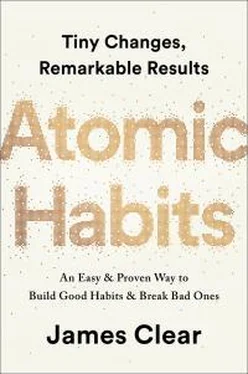

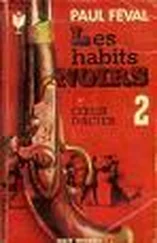
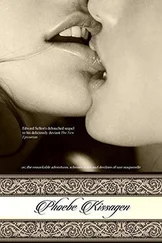
![Джеймс Клир - Атомные привычки [Как приобрести хорошие привычки и избавиться от плохих]](/books/403243/dzhejms-klir-atomnye-privychki-kak-priobresti-horosh-thumb.webp)

